Acidic Soil: What It Is, How You Can Change It
Finding the right soil pH is important for the health of your plants. A proper pH balance helps plants develop strong root systems and uptake vital nutrients. While many gardeners focus on adding organic matter to their soil, testing soil pH levels is equally important.
Once you find your soil’s pH level, you can add things like limestone or elemental sulfur to balance it out. Acidic soil can be a real problem for your plants. It can stunt their growth and prevent them from absorbing basic nutrients needed for healthy plant development.
In this article, we’ll explain all about the importance of pH levels in your soil and how you can adjust them to help keep the plants happy and thriving. Let;’s get started.
What is Acidic Soil?
Acidic soil is soil that has a pH level of less than 7.0. This means that the soil is more acidic than neutral and can challenge plants to grow. The most common causes of acidic soil are high levels of rainfall, pollutants, and chemical fertilizers. The soil pH scale ranges from 0 to 14 with 7 as neutral.
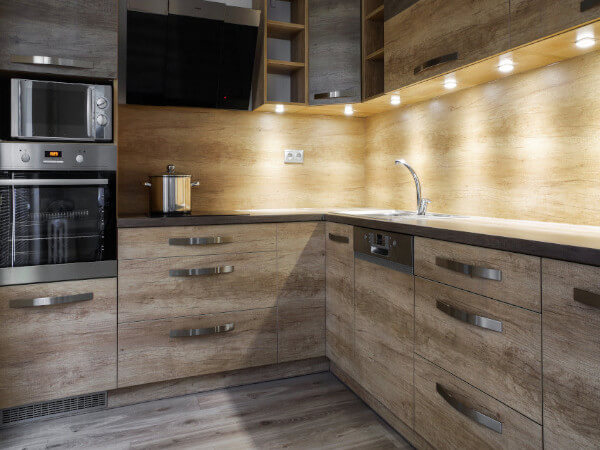
Acidic soil can have a harmful effect on plant growth by inhibiting nutrient uptake, damaging root systems, and causing leaf discoloration. It can also be a haven for pests and diseases.
Evaluating Soil
Identify Your Soil Type
Before testing your soil or adding anything to it, it is important to know what type of soil you have. Understanding the ecology of your land will help you determine if acidic soil is a result of natural conditions or something that you can fix.
For instance, well-drained soil and loose soil will be easily altered, while compacted soil with lots of clay in it will be difficult to change.
Understand Your Soil pH
Soil pH is a measure of how acidic or alkaline your soil is. A pH of 7 is neutral, below 7 is acidic, and above 7 is alkaline. The lower the pH, the more acidic the soil. Soil pH value can be affected by many things such as rainfall, organic matter, minerals in the soil, and the types of plants growing there.
Consider What You’re Planting
Some plants prefer more acidic soil than others. For example, blueberries and azaleas thrive in acidic soil, while rhododendrons and dogwoods prefer more alkaline soil. If you’re trying to grow a plant that prefers a different pH than your current soil, you’ll need to adjust the pH.
Test the soil’s pH
Testing the soil’s pH is as simple as buying a kit at your local nursery, or you can ask your county extension agent for a soil sample and testing instructions. Once you’ve tested the pH, make plans to raise or lower it depending on what kind of plants you want to grow and their preferred pH level. The good news is that there are simple DIY soil tests that you can do.
Have Your Water Tested
Your water supply might be what is affecting the soil’s pH level, so have a sample of your well or tap water tested to see what its pH is. If you don’t test the soil and the water, you’re not going to know whether your problem is with your soil or your water supply.
How to Change Soil pH
Make sure you check your soil’s pH every year by sending a soil sample to your local extension office to have them perform the test for you.
Increasing Soil pH
To make soils less acidic, the common practice is to apply a material that contains some form of lime. Ground agricultural limestone is also frequently used. Here are other ways of increasing the pH level of your soil:
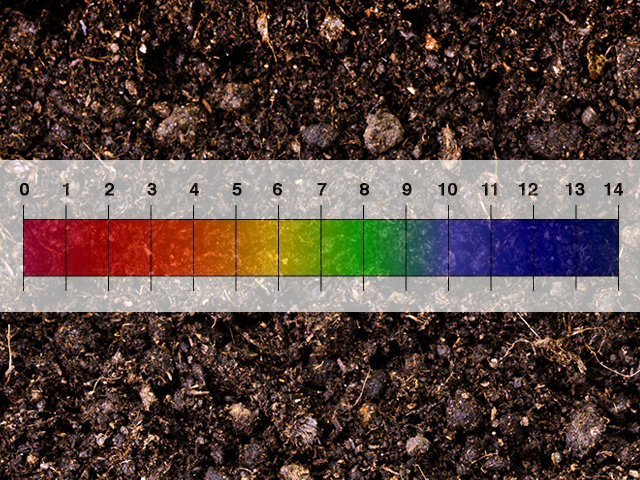
Pick a Liming Material
There are many liming materials on the market, and they come in different forms. These ground limestone products include pulverized, granular, pelletized, and hydrated. Depending on your soil type and the amount of moisture in the ground, one of these products might be a good option.
Pulverized lime is finely ground and easily absorbed by the soil. However, it’s more difficult to spread because it can clog the applicator. Granular and pelletized lime is less likely to clog when spread with a fertilizer spread over turf areas.
However, it’s not as effective at altering the soil pH. Hydrated lime should be used with extremely acidic soils because it’s more water soluble and can quickly increase the soil’s pH. Some lime sources contain micronutrients like dolomite, a mixture of calcium and magnesium carbonates.
However, you should only use dolomite lime if your soil is magnesium deficient. Do not add more magnesium to soils that are already high in it.
Consider Adding Wood Ashes
Wood ashes can also be used to increase the pH of acidic soils. The potassium, calcium, phosphate, and boron in wood ashes help to make the soil more alkaline and provide some nutrients to plants.
When using wood ashes, it’s important to take into consideration the amount of sodium present. However, wood ash is not as effective as lime, but it can dramatically increase a soil’s pH over time.
Due to this, you should closely monitor your soil as you apply wood ash. Keep the ash from contact with any plant roots or germinating seedlings because it may damage them.
Apply the Liming Source
Once you’ve determined that your soil is acidic, the next step is to add a liming source. A liming source is an agent that helps raise the pH of acidic soils. There are many different liming sources available, but the most common are limestone and lime.
Water the Soil Regularly
Putting a liming source into your soil is not enough. You must water it to help it move through the soil to where you want it. Lime moves through the soil very slowly, so be patient; wait at least one growing season before testing your soil again.
Decreasing the Soil pH
Some types of fertilizers can also help acidify the soil and most of them are safe to apply. These acidifying fertilizers include monoammonium phosphate, ammonium sulfate, diammonium phosphate, urea, and ammonium nitrate. Make sure you read the label on the fertilizer bag to determine if it’s acidifying fertilizer.
Use Organic Materials
Over time, organic matter such as pine needles, compost, or composted manure can acidify the soil. If you have added organic mulches to your soil in the past, test your pH annually. Organic matter is also good in improving soil drainage and aeration.
Consider Applying Sulfur to Lower Soil pH
Sulfur can help adjust the soil’s pH to desired levels. It is especially helpful for high-pH soils. However, sulfur does not last as long as lime, so you may have to reapply every few years. You should use elemental sulfur rather than sulfate or sulfite forms of sulfur that can be harmful to plants.
An excellent way to lower the pH value of small beds or garden areas is the addition of sphagnum peat. Sphagnum peat is also a good source of organic matter. Granular sulfur is also the safest, least expensive, but the slowest acting product to use when lowering your soil pH. The addition of sphagnum peat to large areas would also be cost-effective.
Apply Aluminum Sulfate if Soil pH Is too Low
If the soil pH value is too low, you can apply aluminum sulfate to increase the acidity. This compound makes the soil more acidic due to a chemical reaction involving aluminum. Be sure to read the product label to ensure that the aluminum sulfate you are using is specifically for agricultural use. Also, avoid applying aluminum sulfate if the soil is already too acidic.
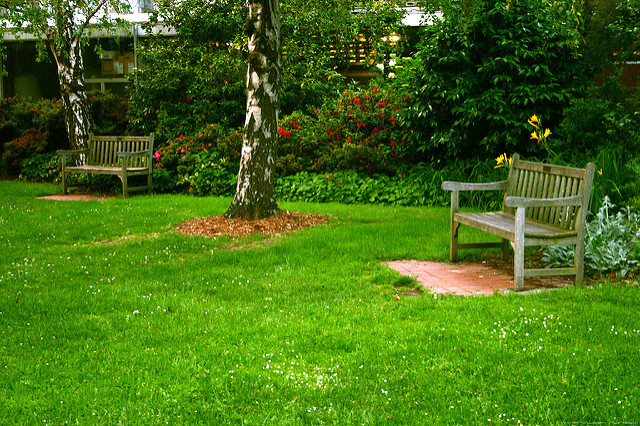
Till the Materials into the Soil and Water Well
When applying lime, sulfur, or aluminum sulfate to the soil, be sure to till them into the soil and water well. This will help the materials to dissolve and move through the soil so that plants can absorb them. If you do not water your fertilizer well, plants may not receive all of its benefits.
Rinse Your Plant After Application
If you are applying any fertilizer to your plants, be sure to rinse them off with water after application. This will help to remove any residue that may remain on the foliage and prevent any damage from occurring.
If sulfur or aluminum sulfate gets on the leaves of your plants, you’ll need to rinse it off with a hose. Failure to rinse them off can result in burns to the leaves and damage to your plants. Watering your plants will also help the compounds.
FAQs on Acidic Soil: What it is and How You Can Change it
What happens when the soil is acidic?
Soil acidity decreases the availability of plant nutrients such as phosphorus and molybdenum. It also increases the availability of some toxic levels, such as manganese and aluminum.
Is acidic soil good for plants?
No, it’s not. Acidity can stunt a plant’s growth and make it more susceptible to pests and disease. However, most plants thrive in slightly acidic soils because that pH affords them good access to all nutrients.
Why is it important to control the pH of the soil?
A soil’s pH is one of its most important characteristics because it influences the availability of essential nutrients for plants. By managing the pH, you can ensure your plants have what they need to thrive, increasing yields and decreasing inputs.
Final Thought on Acidic Soil: What it is and How to Change it
There you have. Taking your soil acidity into account is an important part of gardening, whether you’re trying to grow acid-loving plants or not. Luckily, it’s not difficult to manage the pH of your soil, and most soils can be brought into a desirable range with a little effort.
The post Acidic Soil: What It Is, How You Can Change It appeared first on Kitchen Infinity.
Did you miss our previous article…
https://www.conduithardware.com/?p=856
Gains in Single-Family Housing Expected to Increase in 2022
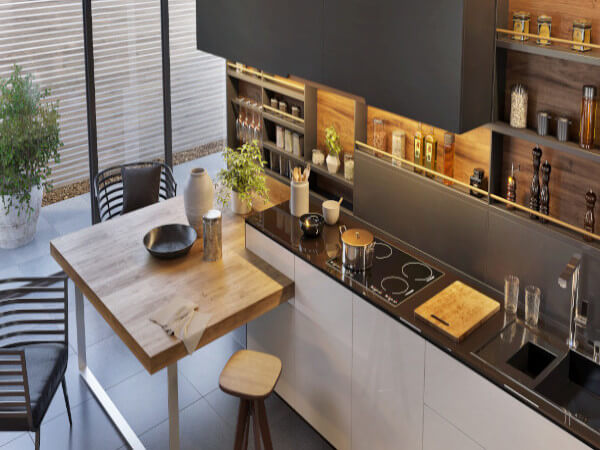
WASHINGTON, DC — Breaking an eight-year trend, there have been more single-family homes under construction in recent months than multifamily units, according to the National Association of Home Builders, which predicted additional gains in single-family construction in 2022.
Despite some cooling earlier this year, the continued strength of single-family construction in 2021 means that there are now 28% more single-family homes under construction than a year ago, said Robert Dietz, chief economist for the Washington, DC-based NAHB.
“These gains mean single-family completions will increase in 2022, bringing more inventory to market despite a 19% year-over-year rise in construction material costs and longer construction times,” Dietz said.
Ongoing single-family and multifamily housing production accelerated in November, due to strong demand, with overall housing starts increasing 11.8% to a seasonally adjusted annual rate of 1.68 million units, according to U.S. government figures.
Despite inflation concerns and ongoing production bottlenecks, builder confidence in the market for newly built single-family homes also edged higher for the fourth consecutive month on strong consumer demand and limited existing inventory, the NAHB added.
“While demand remains strong, finding workers, predicting pricing and dealing with material delays remains a challenge,” said Dietz. “Building has increased but the industry faces constraints, namely cost/availability of materials, labor and lots. And while 2021 single-family starts are expected to end the year 24% higher than the pre-COVID 2019 level, we expect that higher interest rates in 2022 will put a damper on housing affordability.”
The post Gains in Single-Family Housing Expected to Increase in 2022 appeared first on Kitchen & Bath Design News.
Did you miss our previous article…
https://www.conduithardware.com/?p=853
Demand Seen Strong for Aging-in-Place Remodeling Projects

FOSTER CITY, CA — A significant percentage of American homeowners across multiple home-improvement trades plan to explore aging-in-place projects for themselves or a loved one in the coming year, a newly released survey reveals.
According to the survey’s findings, some 63% of the homeowners polled report that they will explore aging-in-place home improvement projects for themselves within the next 12 months, while another 6% plan to do so for a loved one.
The November survey, which involved some 2,110 respondents in the U.S., was conducted by Modernize Home Services, a Foster City, CA-based online firm that connects homeowners with contractors and other home-services professionals. The company operates in more than 15 home segments, including bathrooms and kitchens.
Among the primary projects to be considered, researchers said, are bath remodels that feature walk-in tubs and seats within a shower. Other aging-in-place products in high demand include medical alerts, non-slip flooring, stair lifts, grab bars and wider hallways.
“There are a few projects that offer more safety and security – such as installing brighter lightbulbs – that can be done by any homeowner, but more complex projects like walk-in tubs and concurrent bath and kitchen upgrades require professionals,” said Modernize V.P. Gregg Hicks. “This study shows an opportunity for contractors to capitalize on the increased demand for aging-in-place home improvement projects in the coming years.”
The post Demand Seen Strong for Aging-in-Place Remodeling Projects appeared first on Kitchen & Bath Design News.
Did you miss our previous article…
https://www.conduithardware.com/?p=850
Wellness Features Termed a ‘Necessity’ for Today’s Homes
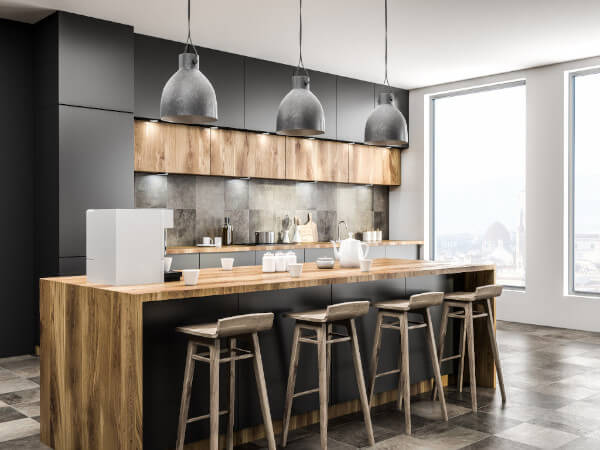
INDIANAPOLIS — Wellness features, impacted by the COVID-19 pandemic and an elevated awareness of indoor environments’ impact on physical and mental health, are no longer a luxury, but rather a necessity in today’s homes, a leading wellness expert contends.
According to Dr. Jie Zhao, exec. v.p. of Delos, a New York-based wellness real estate and technology company, COVID-19 has literally reshaped the way homes – including kitchens and baths – will be designed, built, equipped and remodeled in years to come.
“People are much more cognizant of the important role that homes play in our lives, and how these environments can have a positive or negative impact on the wellness of their inhabitants,” Jie said.
At the recent “Insights Summit,” an annual event sponsored by the Home Improvement Research Institute (HIRI), Jie outlined four key wellness trends that he believes will have the greatest impact on home improvement in the post-pandemic world. Among them:
• Indoor Air Quality: Because viruses spread through the air much easier than by surface contact, the pandemic shed light on the importance of indoor air quality, or IAQ, as a component of a healthy home, Jie said.
“Air filtration is vital to the reduction of particle transmission,” he observed. “Not only can air-cleaning technologies improve peace of mind when it comes to invisible health threats like COVID-19, they also tackle visible particles in the air such as smoke and other harmful particles.”
Jie said that ventilation and/or ionization technology will be at the forefront of the fight against contaminated air in home spaces. “For this reason, IAQ may be the biggest wellness trend to have emerged from the pandemic,” he noted.
• Mental Wellness: Mental wellness issues persisted long before the emergence of the coronavirus, but the amount of attention devoted to the topic increased significantly afterward, Jie said, noting that mental health came to the forefront of conversation due to isolation during stay-at-home orders.
Jie observed that one result of this for the home-improvement industry is the general migration away from congested cities in favor of larger residences, more nature and less commuting time. Jie also pointed to the effect of mental wellness on increased demand in certain product categories, including home entertainment, artists’ supplies, sports equipment and pets.
• Home Offices: Another major change emerging from the pandemic is the increased importance of the home office.
“Many employees have made investments in their home offices and have gotten used to working from home,” Jie said, pointing to surveys which found that 80% of workers want to be able to work from home three days per week, and 92% want at least one remote workday per week.
“There has been a rise in office furniture and accessories that support health and wellness, such as the standing desk or ergonomic keyboard,” Jie said, adding that 20-25% of companies are currently reimbursing their employees for wellness-related home office supplies and furniture, “hinting at the prospect that work-from-home may be around well into the coming years.”
• Fitness: While the spread of COVID-19 led to the temporary closure of most gyms and athletic institutions, it gave rise to new home fitness technologies, as people sought to stay fit within the confines of their own homes, Jie pointed out.
“Companies like Peloton and MIRROR are changing the way we think about fitness (and) combining the physical and virtual,” he said. “Consumers not only purchase a piece of gym equipment for their home, but they buy into an entire online social and content experience.”
“I expect to see more integration with online fitness platforms and home décor,” he said. “People want convertible spaces, so the easier their equipment blends with their home and lifestyle, the better.”
The post Wellness Features Termed a ‘Necessity’ for Today’s Homes appeared first on Kitchen & Bath Design News.
Did you miss our previous article…
https://www.conduithardware.com/?p=843